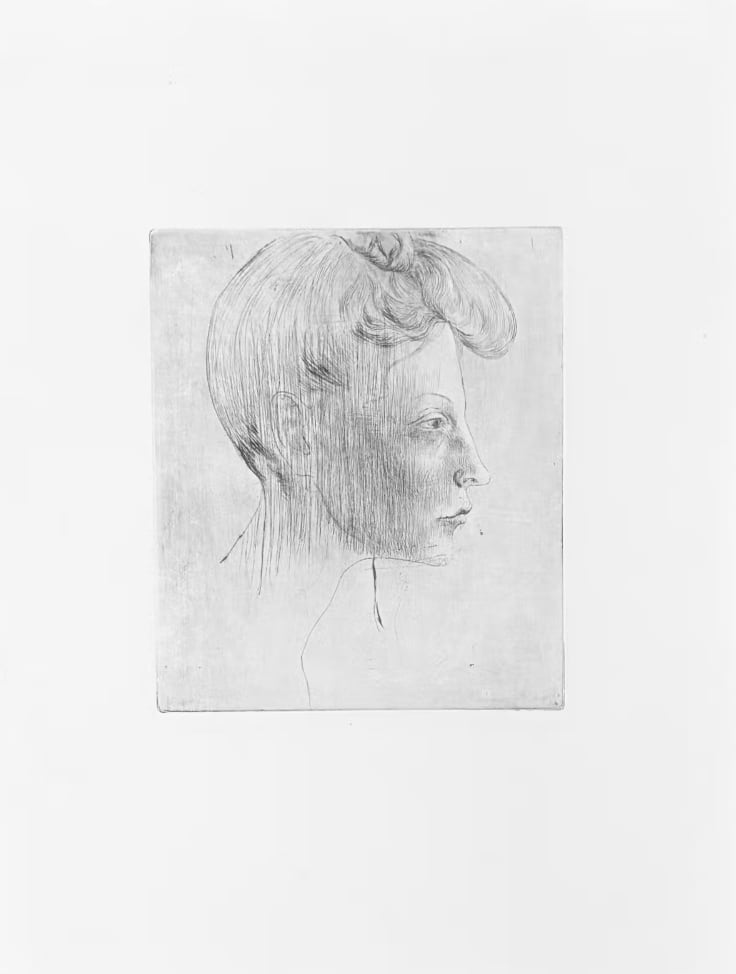Pablo Picasso Spanish, 1881-1973
This series was not signed or numbered
Framed: 66 x 83 cm
Provenance
This is a portrait of a woman known only as Madeleine, an artist's model and Picasso's lover during his early years in Paris. She appears in certain of his Blue period and Rose period works. This represents the latter, when his compositions became dreamlike and allegorical. In Pierre Daix’s book “PicassoL Life & Art” The author writes about how the artist showed him a copy of this etching: “Its Madelaine”, said Picasso, “I almost had a child with her. You imagine me with a sixty-four year old son!” At the time of writing this would have dated Picasso’s affair with our subject to 1904. The series of etchings, known as the Saltimbanques, consisted of a group of works all relating to the same theme. Picasso was a very young man when he completed these works but they are considered to be amongst the very best he ever made. The name of the series comes from the Italian words saltare, meaning "to leap," and banco, "bench," which refers to the stage on which the acrobats usually performed. Saltimbanques were the lowest order of acrobats. Although this etching is unrelated to this theme still it is considered part of the series having been made at the same time.
Published by: Ambroise Vollard, Paris, 1913
Join our mailing list
* denotes required fields
We will process the personal data you have supplied to communicate with you in accordance with our Privacy Policy. You can unsubscribe or change your preferences at any time by clicking the link in our emails.
